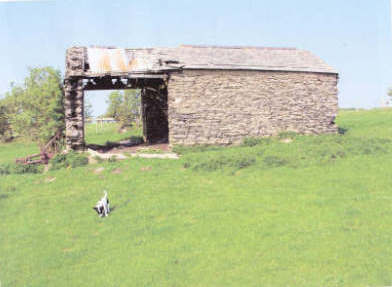|
Charcoal Iron
Charcoal iron is the substance created by the smelting of iron ore with charcoal. All ironmaking blast furnaces were fueled by charcoal until Abraham Darby introduced coke as a fuel in 1709. The more economical coke soon replaced charcoal in British furnaces, but in the United States, where timber for charcoal was abundant, charcoal furnaces lingered much longer. Even after the introduction of anthracite smelting to the US in 1839, and the development of American coke production later in the century, charcoal iron continued to find favor because of its heat-resistance, toughness, and malleability. The last charcoal furnace in the US did not close until 1945. In Britain, the penultimate furnace built was Alderwasley in 1764, followed by Warsash Furnace in 1869. The last working furnace at Backbarrow converted to coke in 1922. In Western Australia, pig iron was made using charcoal between 1948 and 1981 at Wundowie. At its peak, operating two charcoal-fueled blast furnaces, t ... [...More Info...] [...Related Items...] OR: [Wikipedia] [Google] [Baidu] |
Smelting
Smelting is a process of applying heat to ore, to extract a base metal. It is a form of extractive metallurgy. It is used to extract many metals from their ores, including silver, iron, copper, and other base metals. Smelting uses heat and a chemical reducing agent to decompose the ore, driving off other elements as gases or slag and leaving the metal base behind. The reducing agent is commonly a fossil fuel source of carbon, such as coke—or, in earlier times, charcoal. The oxygen in the ore binds to carbon at high temperatures due to the lower potential energy of the bonds in carbon dioxide (). Smelting most prominently takes place in a blast furnace to produce pig iron, which is converted into steel. The carbon source acts as a chemical reactant to remove oxygen from the ore, yielding the purified metal element as a product. The carbon source is oxidized in two stages. First, the carbon (C) combusts with oxygen (O2) in the air to produce carbon monoxide (CO). Second, the ... [...More Info...] [...Related Items...] OR: [Wikipedia] [Google] [Baidu] |
Minas Gerais
Minas Gerais () is a state in Southeastern Brazil. It ranks as the second most populous, the third by gross domestic product (GDP), and the fourth largest by area in the country. The state's capital and largest city, Belo Horizonte (literally "Beautiful Horizon"), is a major urban and finance center in Latin America, and the sixth largest municipality in Brazil, after the cities of São Paulo, Rio de Janeiro, Salvador, Brasília and Fortaleza, but its metropolitan area is the third largest in Brazil with just over 5.8 million inhabitants, after those of São Paulo and Rio de Janeiro. Nine Brazilian presidents were born in Minas Gerais, the most of any state. The state has 10.1% of the Brazilian population and is responsible for 8.7% of the Brazilian GDP. With an area of —larger than Metropolitan France—it is the fourth most extensive state in Brazil. The main producer of coffee and milk in the country, Minas Gerais is known for its heritage of architecture and colonia ... [...More Info...] [...Related Items...] OR: [Wikipedia] [Google] [Baidu] |
Harrison Ainslie
The firm of Harrison Ainslie & Co. was a British firm of ironmasters and iron ore merchants, selling high quality haematite from their mines on Lindal Moor to smelters in Glasgow, Scotland, South Wales and the Midlands. From a 21st-century perspective, they are more interesting as the last operators of charcoal-fired blast furnaces in Great Britain. Their furnaces were stone-built, water-powered, and much smaller than the coke-fired furnaces of the same era. Managers At various times the company was known as Richard Ford & Co, the Newland Co, George Knott & Co, Knott, Ainslie & Co, Harrison Ainslie & Co, Harrison Ainslie, Roper & Co, and finally as Harrison Ainslie & Co Ltd. Associated companies were the Hampshire Haematite Iron Co, Melfort Gunpowder Co, Lorn Furnace Co and Barrow & Ulverston Rope Co. Newland Furnace was built in 1747 by Richard Ford, William Ford, Michael Knott and James Backhouse. Richard Ford was born in Middlewich in 1697. He was active in the Furness ir ... [...More Info...] [...Related Items...] OR: [Wikipedia] [Google] [Baidu] |
Japanese Swordsmithing
Japanese swordsmithing is the labour-intensive bladesmithing process developed in Japan for forging traditionally made bladed weapons ( ''nihonto'') including ''katana'', ''wakizashi'', ''tantō'', ''yari'', ''naginata'', ''nagamaki'', ''tachi'', '' nodachi'', ''ōdachi'', ''kodachi'', and ''ya'' (arrow). Japanese sword blades were often forged with different profiles, different blade thicknesses, and varying amounts of grind. ''Wakizashi'' and ''tantō'' were not simply scaled-down ''katana'' but were often forged without a ridge (''hira-zukuri'') or other such forms which were very rare on ''katana''. Traditional methods Steel production The steel used in sword production is known as , or "jewel steel" (''tama'' – ball or jewel, ''hagane'' – steel). ''Tamahagane'' is produced from iron sand, a source of iron ore, and mainly used to make samurai swords, such as the ''katana'', and some tools. The smelting process used is different from the modern mass production of st ... [...More Info...] [...Related Items...] OR: [Wikipedia] [Google] [Baidu] |


.png)